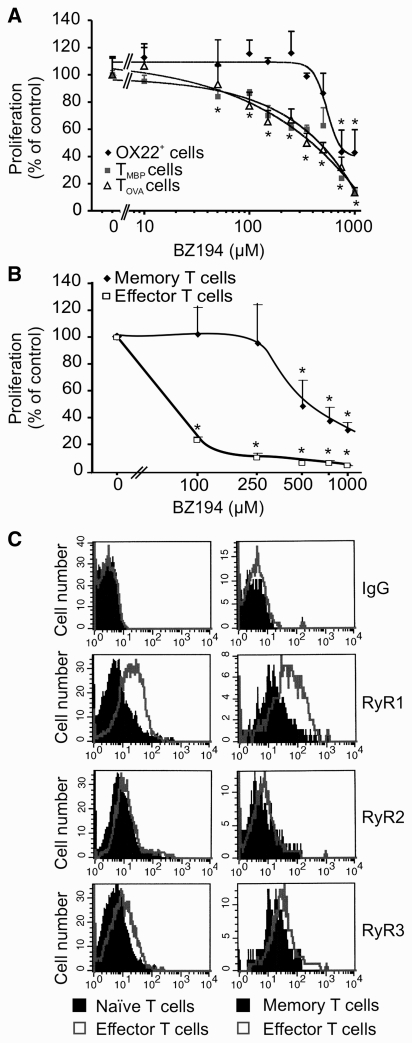Figure 3.
Effector T cells are more sensitive to NAADP antagonism than naïve and long lived memory T cells. (A) NAADP antagonism preferentially suppresses activation of antigen-experienced effector T cells. OX 22high (OX 22+) naïve T cells (black) or effector T cells (TMBP cells, grey and TOVA cells, white) were activated with anti-CD3/CD28 antibody in the presence of the indicated amounts of BZ194. (A) The proliferative response was determined 2 days later by (3H)dT incorporation. For better comparability, proliferation is indicated as a percentage of non-treated naïve (4658 ± 249 cpm) and effector T cells (TMBP 7391 ± 232 cpm, TOVA 6490 ± 272 cpm), respectively. Data represent mean values ± SD of triplicate measurements. Representative data of three independent experiments. *P ≤ 0.01. (B) Memory T cells are less susceptible to NAADP antagonism than effector T cells. Shown are the effects of increasing amounts of BZ194 on antigen-specific proliferation of TOVA-GFP memory (black) or TOVA-GFP effector (white) cells. Quantification of cell numbers was performed by cytofluorometry 2 days later. Proliferation is indicated as percent of control (no BZ194 treatment). Data represent means ± SD of three measurements from two independent experiments. *P ≤ 0.05. (C) Cytofluorometrical quantification of ryanodine receptor 1–3 in naïve T cells (shaded histograms, left panel) and memory T cells (shaded histograms, right panel) compared to effector TMBP cells (open overlay histograms). Representative data of at least three independent experiments. RyR = ryanodine receptor; Ig = immunoglobulin.

